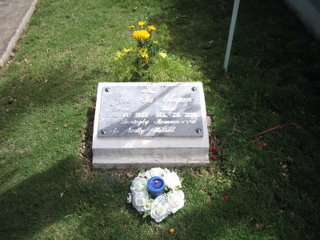 The Lianga municipal cemetery is located on the southern edge of the town. It is directly adjacent to the seashore and bounded on that side by a strip of white sand and mangrove trees while coconut trees mark the other boundaries.
The Lianga municipal cemetery is located on the southern edge of the town. It is directly adjacent to the seashore and bounded on that side by a strip of white sand and mangrove trees while coconut trees mark the other boundaries.The dead of Lianga have come to rest here as far back as I can remember and the graves scattered helter-skelter throughout the old section of the cemetery are mute witnesses to the generations of local inhabitants who have lived, died and were buried on this ground.
Most of the graves are simple concrete boxes distinguishable from the others only by marble or stone markers or, at the very least, the names of the deceased scratched on the wet cement of the tomb then allowed to dry.
The northern section of the cemetery is, however, markedly different. Here the more affluent and socially prominent families of Lianga have their elaborate burial plots and mausoleums enclosed in ironwork fences or shaped concrete walls. There is less clutter and more space. Apparently, even in death, the social classes are divided as ever and the haves still have it better than the have-nots.
Perhaps, like the ancient Egyptians who built the great pyramids, the Lianguenos, like most Filipinos, believe that the more monumental and elaborate the resting places of their dead, the greater are their chances to achieve some form of immortality in this life or the next. And what better way is there to proclaim your status and social prominence than by flaunting the best burial money can buy?
When my father passed away ten years ago, we buried him in the same way he buried his parents - in a closed concrete box buried in the earth and above him we planted green grass and flowers. Only a marble plaque marks his grave. It was what he would have wanted - simple, functional and cleanly elegant.
My father, I realized it now, had already his own claim to immortality. Somerset Maugham, the noted English writer, once wrote that the only reason why we cannot regard this imperfect world with disgust is the beauty which now and then men create out of chaos; the pictures they paint, the music they compose, the books they write and the lives they lead.
Of these, he writes, the richest beauty is a life well lived. That, he affirms, is the greatest and most perfect work of art.
No comments:
Post a Comment